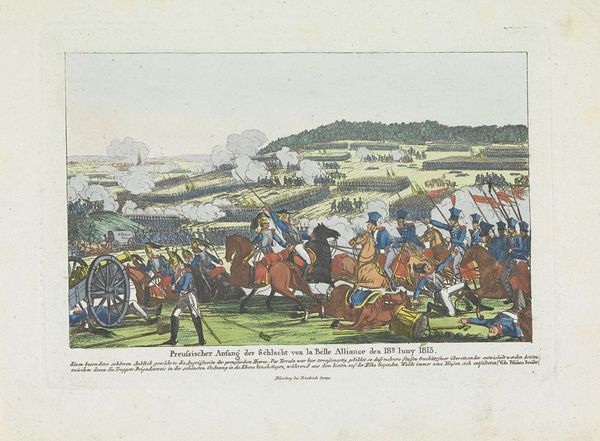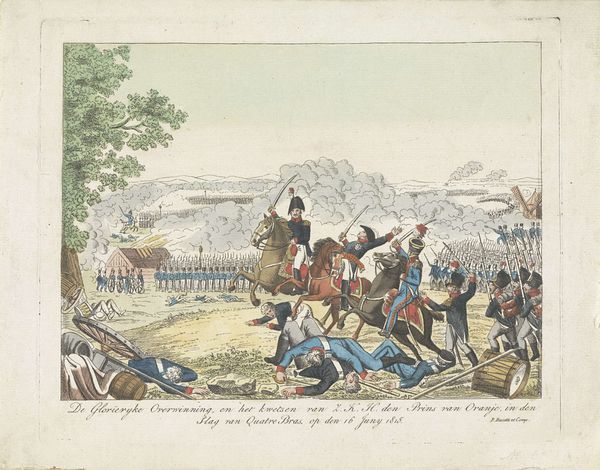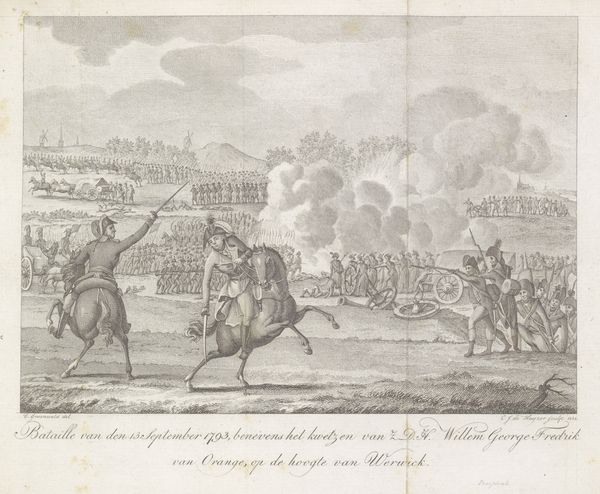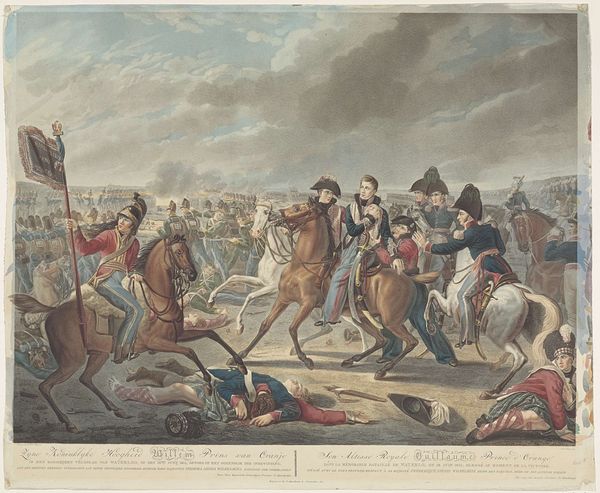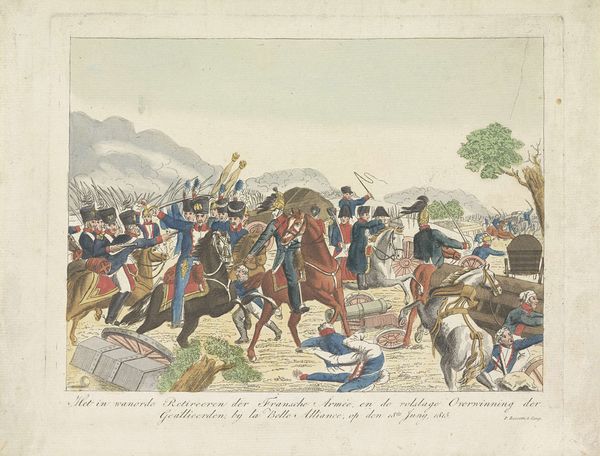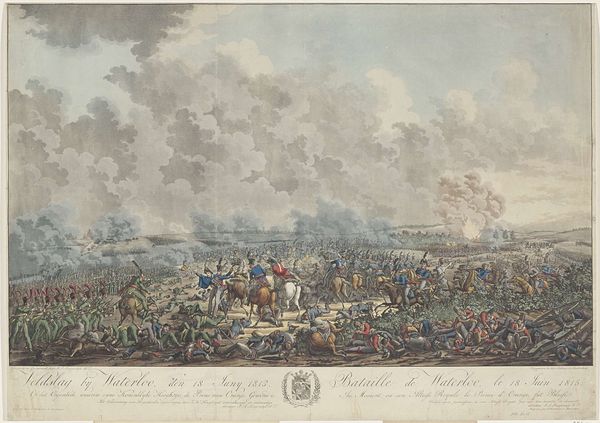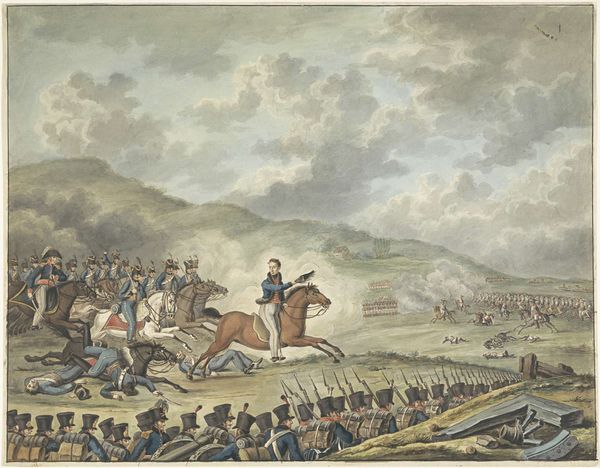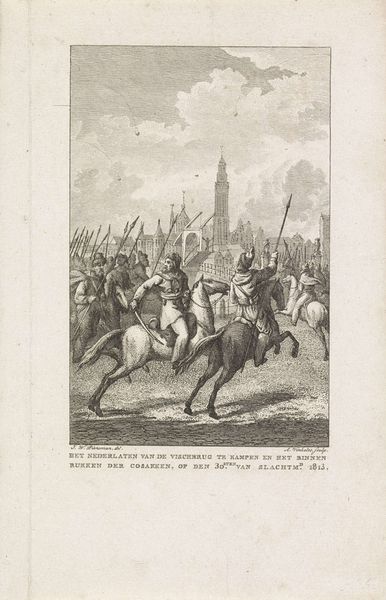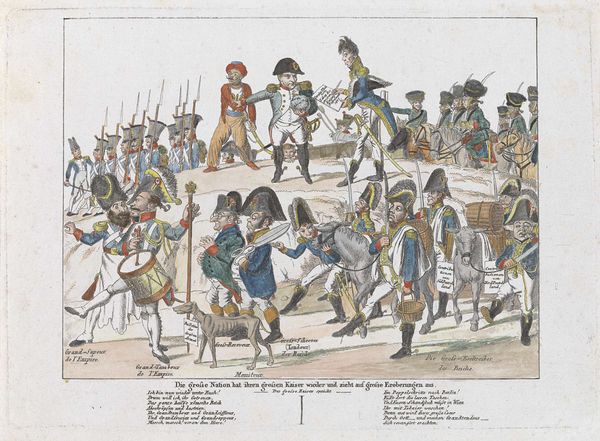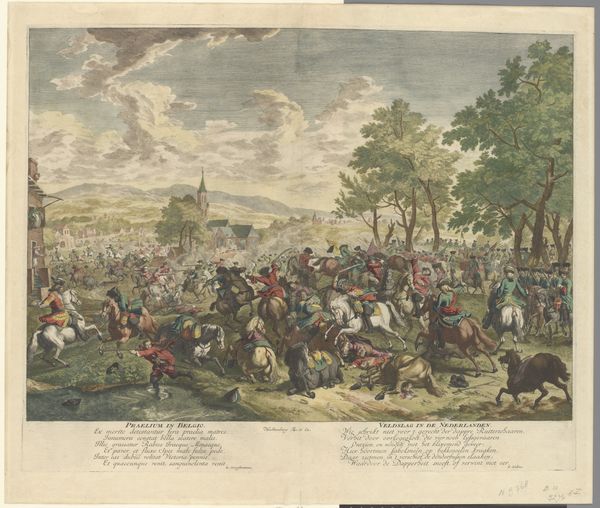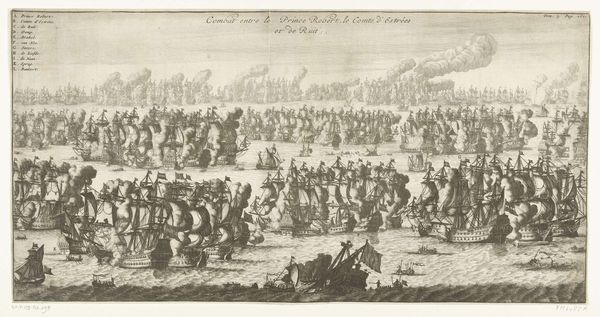
Von Blücher leidt de Pruisische troepen in de slag bij Waterloo, 1815 1815
0:00
0:00
Dimensions: height 185 mm, width 255 mm
Copyright: Rijks Museum: Open Domain
Editor: This engraving, "Von Blücher Leading the Prussian Troops at the Battle of Waterloo, 1815," from the Rijksmuseum, vividly captures a moment of intense battle. What strikes me is the stark contrast between the foreground chaos and the orderly lines of soldiers in the background. What do you see when you look at this piece? Curator: The engraving meticulously depicts the structural organization of battle, almost as if each figure and form operates as a signifier. Notice how the lines of soldiers create a grid-like structure, sharply contrasted by the curves of bodies and horses intertwined in chaotic conflict. How might this be read? Editor: Perhaps the artist is highlighting the tension between order and chaos inherent in warfare? Curator: Precisely. Moreover, the color palette, limited as it is, establishes a visual hierarchy. Observe how the blues and reds of the uniforms recur throughout, providing a cohesive rhythm. How does this limited color choice impact the scene's reception? Editor: I guess it adds a layer of formality to a scene that could be very gruesome; creating a slightly removed and constructed feel? Curator: Indeed. Furthermore, the precise lines and detailed rendering—achieved through engraving—contribute to the overall effect of meticulous, almost clinical observation. This piece presents the war more as a structured phenomenon than as human drama. What does such an approach say about art's relationship with representation? Editor: It makes me consider how technique fundamentally alters what we perceive as reality. Curator: An insightful thought to conclude with.
Comments
No comments
Be the first to comment and join the conversation on the ultimate creative platform.
